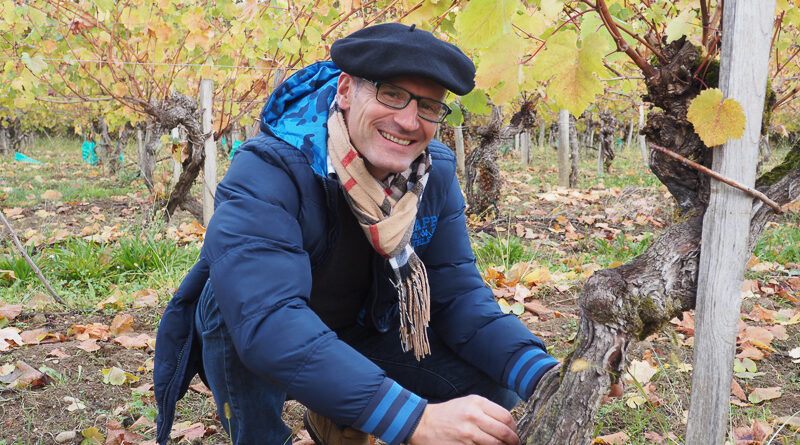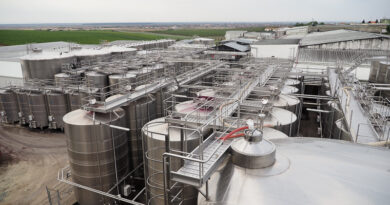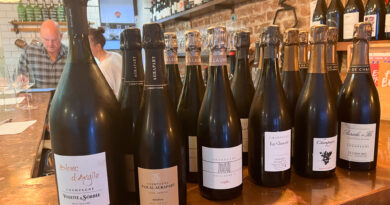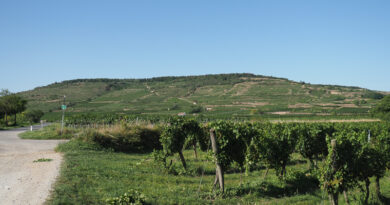Plaimont: looking to old varieties for future success
Back in 1979, three co-operative wineries in the southwest of France joined forces. The cellars of Plaisance, Aignan and Saint Mont merged, and their initials (‘PL’ for Plaisance, ‘AI’ for Aignan and ‘Mont’ for Saint Mont) were joined to create Plaimont. Since then, Plaimont has bought some wine estates in the region, and today represents represents 98% of the Saint Mont appellation, 55% of the Madiran appellation, two-thirds of the Pacherenc du Vic-Bilh AOC and 30% of the Côtes-de-Gascogne. It’s a major player in the southwest, and has been incredibly innovative, and acts as a champion of traditional, forgotten varieties.
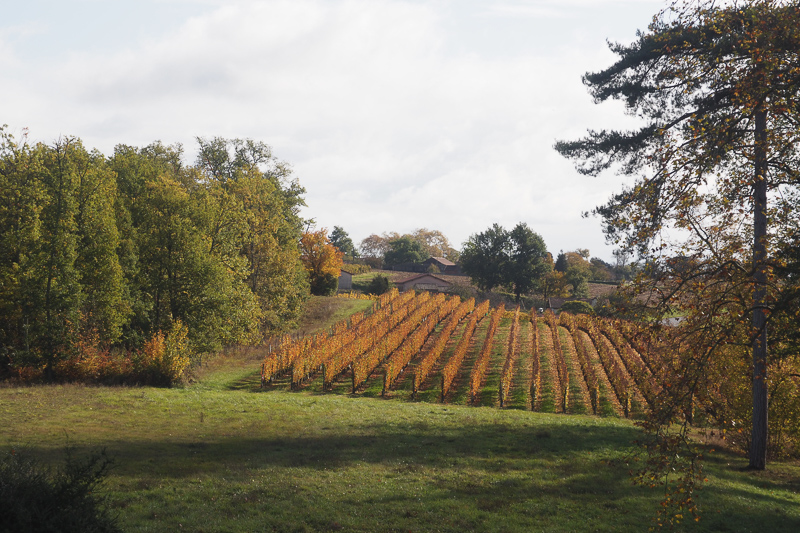
I caught up with head winemaker and MD, Olivier Bourdet-Pees (pictured top), to hear what Plaimont have been up to and taste some of their wines. ‘We are trying to make wines that are more aromatic, more sustainable and more balanced in the mouth – in alcohol, acidity and freshness,’ he explained.
The first wine we tasted was the Moonseng, which is a blend of Manseng Noir and Merlot. ‘This is important for us,’ says Bourdet-Pees. ‘We do believe that in our region, Merlot is a grape of the last century. It was a wonderful grape in the 20th century, but now it is increasingly difficult to have a balanced Merlot in our region. Perhaps everywhere in France. Because the level of alcohol rises so easily, it’s more and more difficult to have a wonderful, balanced Merlot. It is still something that interests the customer: it is famous and well known. But the goal of this cuvée is to blend Merlot with our traditional grape of Manseng Noir.’
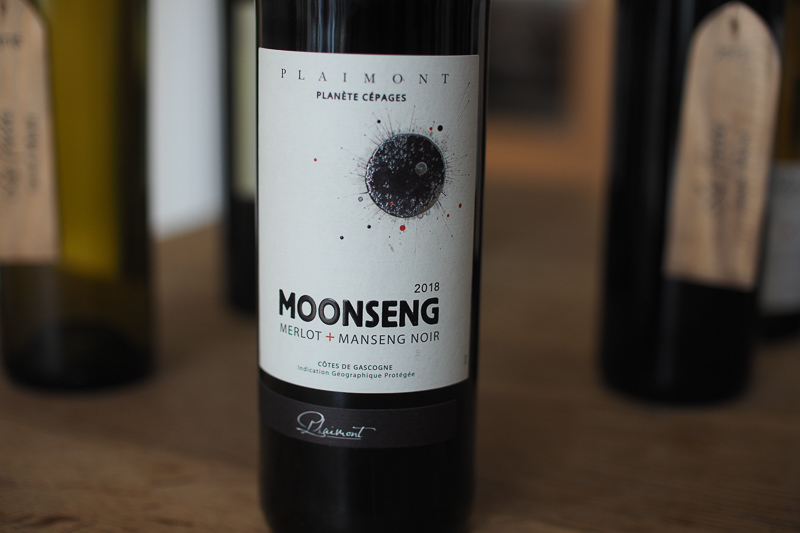
Manseng Noir is a traditional variety that fell out of favour. But its great skill is that it retains freshness even in warm vintages, and has modest alcohol levels. Plaimont studied it for 10 years and started to replant it in 2010. This cuvée has 60% Merlot with 40% Manseng Noir.
‘Manseng Noir was recognized in Plaimont in 2002. We found one plant in an old vineyard and replanted 40 plants in the conservatory in 2002, and then we studied it. It was a big grape present in the zone 100 years ago. Now we have 30 hectares of Manseng Noir planted from one plant. We want to reach 80 hectares of Manseng Noir in our vineyards.’
Why was it what rejected? ‘In my opinion, there was a problem. In reality, the balance in alcohol was too low. It is difficult now to reach 11 or 11.5 degrees alcohol. 100 years ago it was 6 or 7 degrees of potential alcohol.’ So there was a reason that this grape was all but abandoned: the growers weren’t just being daft. But now its time has come. ‘People wanted wines with more power and strength, and Tannat was always better at this.’
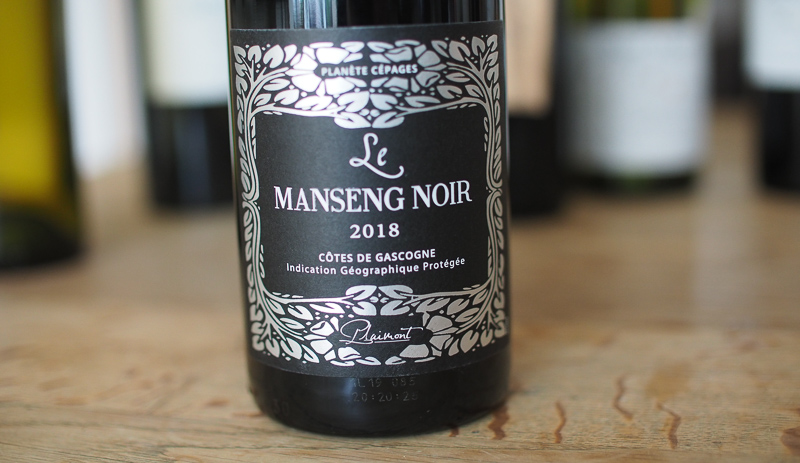
What are the parents? ‘We don’t know,’ says Bourdet-Pees, but it is close to Tannat: the same family.’ Currently, Plaimont is the only producer with this variety. Others could plant it; it’s just they are taking all the available vines for now. Could it work in Bordeaux? ‘I don’t know,’ he says. ‘Now they would like to develop other grapes. They want to plant Petit Manseng. Bordeaux is difficult to understand!’
Moonseng Merlot and Manseng Noir 2018 Côtes de Gascogne
12.5% alcohol. This is so fresh and supple, with sappy cherry and blackcurrant fruit, with some leafy hints. So fresh and vital with juicy fruit, a hint of spice, some liquorice and hints of gravel. Very easy drinking but with a hint of seriousness. This is so fresh with lovely green notes. 90/100 (retail in the UK is £8.99)
Plaimont Manseng Noir 2018 Côtes de Gascogne, France
11.5% alcohol. Current release. Floral and fresh with black cherries and blackberry fruit on the nose. There are subtle green hints, and the palate is fresh and fleshy, with low tannins and high acid supporting the beautiful fresh berry fruits. It’s such an expressive, fruit-driven wine with some seriousness as well as drinkability. This is really lovely. 94/100 (In the UK this is £15)
Plaimont Manseng Noir 2019 Côtes de Gascogne, France (tank sample)
11.8% alcohol. 2019 was a difficult vintage for reds in Gascogny, with a hot season leading to more alcoholic wines, but this is so fresh and delicious. This is so intense and vivid with some lovely floral aromatics, including violet and black cherry. Deep in colour, but with lovely resolved tannins. Fresh and nicely intense with very supple black fruits and a hint of liquorice. So expressive with great concentration of fruit. Such a beautiful wine. 91-93/100
I asked what his views were on viticulture in the region. Is organics the future, or do we need a new viticulture that takes some of the aspects of looking after the soils, but doesn’t restrict itself to solely the treatments organics uses? ‘You know the climate here, with a lot of rain,’ he says. ‘This is why organics won’t be the only future. The goal for Plaimont is to reach around 20-25% of the vineyard in organic certification. This will be a laboratory to help all the winegrowers who aren’t able to reach organic production. Avoiding herbicides is the main goal for us: we want to stop chemicals on the soil. It is important to make it alive. And we want to lower the use of pesticides. For the moment we are asking growers to reach the HVE3 level. The goal is to reach 13 different kinds of pesticides used in the vineyard per year. 10 years ago we had 21 different kinds of pesticides and we are now reaching 13 maximum for all winegrowers. If you put in something against mildew and something against oidium, that counts as 2 pesticides. Every grower is now reaching a maximum of 13. The goal is to keep going and we should be able to have everyone at 7 or 8 a year. Going to zero or going to organic will only be a part. Not everyone is able to at the moment.’ Plaimont has 5000 hectares of vineyards. ‘We want everyone going along together,’ says Bourdet-Pees, and with this vineyard area it is a challenge.
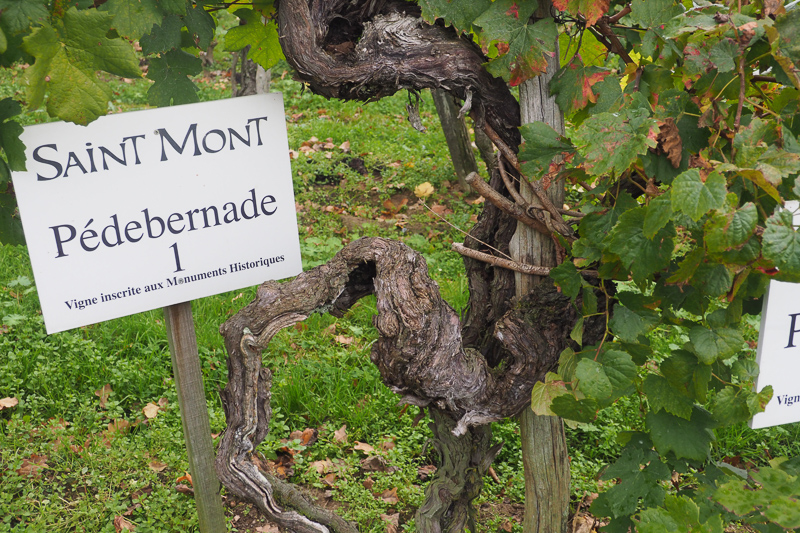
The Cirque Nord vineyard was part of Plaimont’s Cuvée Le Faite for almost 20 years. ‘When Saint Mont became an AOC in 2010, INAO came to Saint Mont and said we have to stop with the northern expositions. Cirque Nord is a pure northern exposition. It is cold, but the soil is hot, with big pebbles. It’s a soil for red wines, but the exposition is nearly too cold for wine growing. INAO said we had to stop using it. I said, I don’t want to stop, it’s my best spot for white production. We have to keep it and plant more vineyards in this exposition in the future to keep the freshness and the balance. INAO said no, so 2010, 2011 and 2012 are not Saint Mont appellation. This was a big thing for us.’
They started making wine just from this two-hectare plot, ageing the wines for a long time in used barrels after a natural barrel ferment, with low sulfites. The wine was bottled after 20 months. In 2014 they came back to the INAO and showed them the wines. They changed their mind, and now Cirque Nord is back in the Saint-Mont appellation.
Cirque Nord Grande Cuvee 2017 Saint Mont, France
14% alcohol. A wonderful year for whites. 50% Gros Manseng, 25% Petit Corbu, 25% Petit Manseng. Golden colour. This is intense and vivid with honey, spice and nuts, as well as some pineapple and lemon notes. It’s a rounded wine, but also very fresh, with a touch of marmalade and spice. Powerful and complex with high acid on the finish. Juicy with amazing intensity of flavour and nice complexity. Such a distinctive wine. 94/100
Cirque Nord Grande Cuvee 2016 Saint Mont, France
14% alcohol. Golden in colour, this has aromas of honey and nuts with some peachy richness. The palate is broad and rich with some hints of coconut as well as powerful citrus and pineapple notes, with a warm spiciness. There’s good acidity here and some harmony, with a bit of oak showing. This has a long spicy finish. Massive potential for future development. 94/100
Cirque Nord Grande Cuvee 2014 Saint Mont, France
13.5% alcohol. This is the debut vintage. Toast, spice and honey on the nose with some marmalade notes. The palate has amazing complexity, with apricot, peach, spice and nuts. This is so complex and has begun to develop in a really interesting way, with some savoury truffle notes as well as the dried citrus fruit and fine toastiness. Such a remarkable wine, still tasting fresh and youthful. 95/100 (£49.99 Gusto Wines)
The next story is rosé. ‘The tradition of rosé wines isn’t huge in Saint Mont,’ says Bourdet-Pees. ‘We have the grapes: Pinenc and Cabernet are amazing for making rosé wines. Tannat is a bit more difficult sometimes. Sometimes we can add white grapes too, not more than 10%.’ He explains that this wine is an adaptation to the climate. It’s a south-facing plot with stony soils. Years ago it was famous for red production. ‘This terroir makes big Tannats that are wonderful for tasting, but they have too much aroma, too much concentration, and too much strength. The first glass is huge, but one more is too much.’ For this reason they think that these terroirs need to make different kinds of wines. This is perhaps their warmest plot, so they chose to make a rosé here.
Château Les Bois Mathieu Rosé 2019 Saint Mont, France
13% alcohol. 20% Tannat, then Pinenc, Cabernet Sauvignon, Cabernet Franc and 10% Petit Corbu (a white grape). Debut vintage. This is beautifully packaged and pale in colour. It’s focused and juicy with bright cherry and citrus fruit. Good acidity, and a bit of spicy structure. It’s very fresh and expressive with lovely weight, and I really like the texture in the mouth, with subtle sappy framing. There’s a vital, spicy character here: quite a gastronomic wine with nice acidity and focus. Lovely. 92/100
In the past, in the region wine was drunk from barrel, and only the most significant moments, such as the birth of a child, they bought bottled wine. They’d buy it and keep it in the soil, where it’s cool. To avoid problems with the labels disintegrating they used wooden identifiers or tags that were tied to the bottle with wire. This is the story behind the distinctive packaging of Le Faîte white and red. This wine was first made in 1996 (red) and 2001 (white). It comes from plot of 5 hectares in Saint Mont. They are focusing on the balance of the wine with Tannat the main grape for the red (75%) and bits of Pinenc and Cabernet Sauvignon. The vinification is simple: just one or two remontages. It stays for a month in the tank, so there’s a long maceration coupled with low extraction.
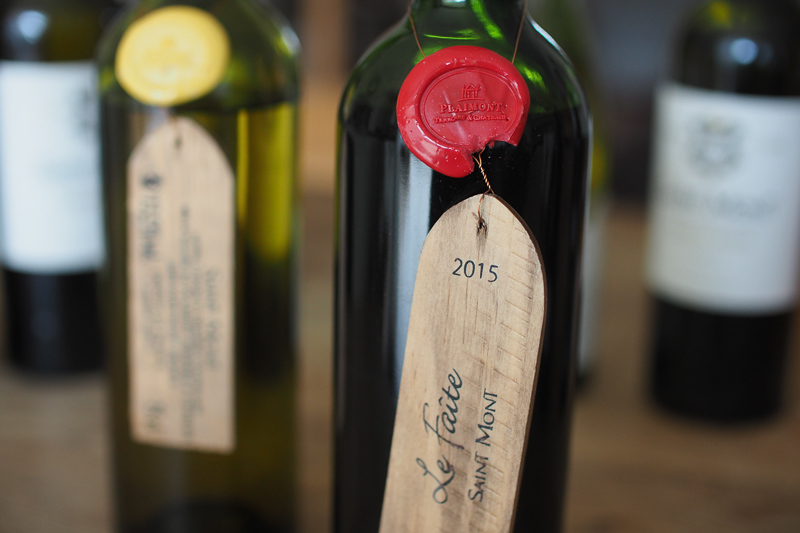
Plaimont Le Faîte Rouge 2015 Saint Mont, France
14.5% alcohol. Fresh and refined with lovely gravelly black fruits, good structure and some subtle earth and herb notes adding savoury interest. Has amazing drinkability, in a very classic style, with a nice sweetness to the fruit, with blackberry and cherry, meshing well with the savoury characters. This is structured and very appealing, with complexity and refinement. 94/100
For the white varieties, one of the key components of blends is another rediscovered grape. Arrufiac was almost abandoned, but now they are replanting. By itself it isn’t good, but in the blend it works really well. ‘Now, all the wine growers have to come back to Arrufiac,’ says Bourdet-Pees. ‘If they want to make white, we ask them to put at least 2-10% of the vineyard in Arrufiac.’ What are its characteristics? ‘It’s tannic and bitter! It is hard and strong. But if you have it, the expression of grapefruit in Gros Manseng is better,’ he says. ‘Gros Manseng is not Gros Manseng without Arrufiac. It is really important.’ It is saline on the finish, too. ‘This is a big problem of wine education. In the kitchen, you know that salt is not good by itself, but you know how useful it is. In wine production now, if a grape is not good by itself, people stop growing it. This is a big problem. The blend is the magic way we have been making wines for many years. These hard grapes are something really useful.’ He adds that it is especially useful in hot years.
The Vignes Retrouvées was an ambitious cuvée for the appellation, launched by Andre de Bosq 30 years ago, and it is known for its freshness and high acidity.
Les Vignes Retrouvées 2018 Saint Mont, France
13.5% alcohol. Gros Manseng, Petit Courbu, Arrufiac fermented and aged in tank for almost two years on lees. This is powerful, intense and vivid, with pineapple and citrus fruit, and lovely acidity keeping everything sharp and bright. Lovely intensity here with brightness and focus, and very direct fruit, finishing with some pink grapefruit. This has amazing potential for development. This is really distinctive. 91/100 (£8.95 The Wine Society)
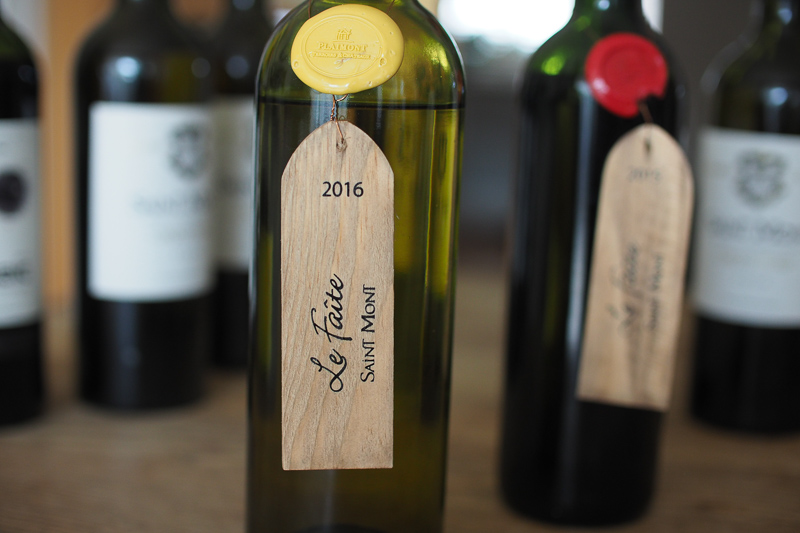
Plaimont La Faîte Blanc 2016 Saint Mont, France
13.5% alcohol. Gros Manseng (65% of the blend, vinified in barrel, none new), Petit Courbu (tank), Arrufiac (tank). Wonderful nose with herbs and spice, wax, honey and grapefruit. The palate is powerful, honeyed, vivid and intense with grapefruit, some pineapple, a touch of marmalade. So multidimensional and vivid with good acidity. This is so expressive, with a bit of salinity on the finish. A multidimensional white wine. 95/100
Find these wines with wine-searcher.com

